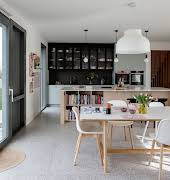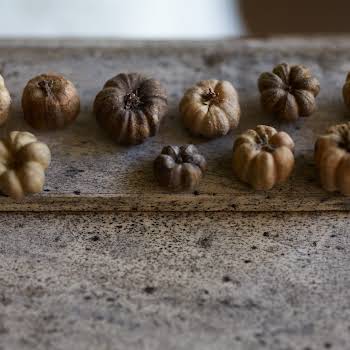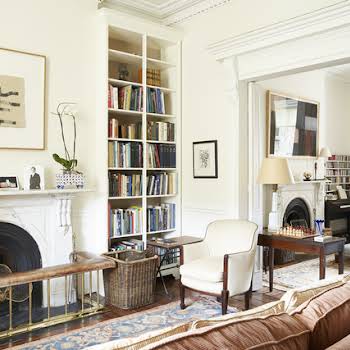
By Sharon Miney
29th Aug 2015
29th Aug 2015
?The classic clip-on picture frame has not changed much over the last several years,? begins Anders Thams of Danish design studio Moebe, 'so we thought it might be interesting to try and interpret an old favourite. The idea is that you can pretty much frame what you want, as long as it is flat or in some way can be flat, as in the example with the flowers. The cool thing is that you can achieve a transparent passe-partout effect if you choose a design that does not fill the entire frame. In this way, the subject almost seems to be floating.? Moebe frames, from €39.95, Nordic Elements, nordicelements.com.
The quaint craft of pressing flowers gets a contemporary update with cool frames and Nordic chic. Here, botanical expert Claire Mullarney talks you step by step through this time-honoured hobby. Then you’re ready to frame your handiwork however you like…
“Pressing and drying flowers is something we tend to associate with Victorian ladies,” laughs Claire Mullarney, of the horticultural herbarium in the National Botanic Gardens, Kilmacurragh. Indeed, this pastime was very much in vogue during Victorian times, when the resulting dried specimens were usually mounted on card and viewed as exquisite artworks. It’s safe to say that flower pressing has fallen out of favour, but one look at these contemporary pressed flowers – beautifully housed in frames by Danish designers Moebe – should be enough to pique your interest in the art of pressing.
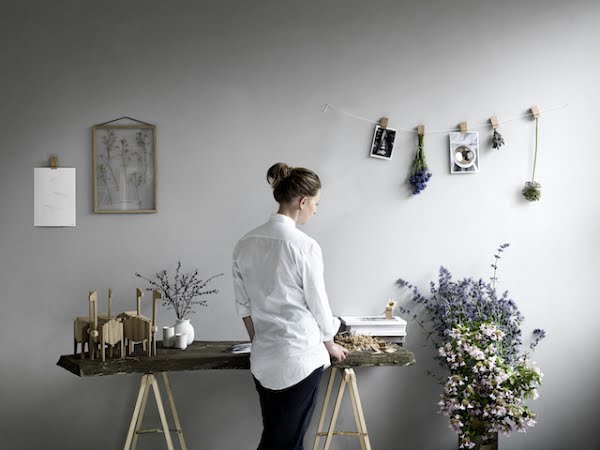
The practice of drying plant specimens probably originated with botanists, Claire explains, and remains today the most important type of plant record for botanical reference. But it’s very easy to do at home for purely decorative reasons. “The main aim when pressing flowers is to dry them as quickly as possible so that they will retain their colour and form,” says Claire. “This is achieved by placing them between layers of absorbent paper and applying pressure. The paper must be changed regularly until all moisture has been absorbed.
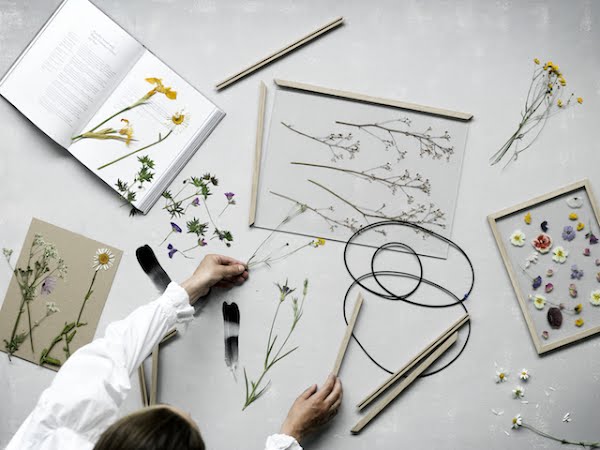
“Plants selected for pressing should be as fresh and dry as possible, collected around mid-morning when dew has dried off. Bulky flowers with fleshy petals, like the large trusses of rhododendron, for example, are not as likely to press as well as plants with a single layer of less substantial petals, like Cosmos or a hardy geranium such as ‘Rozanne’ [scroll down for Claire’s top flower picks tip box].
“All you need is several heavy books – think plant encyclopaedias – and plenty of newspaper. Lay out your specimen on layers of newspaper on the firm surface of one book, place more layers of newspaper on top, and another heavy book, or even two, on top of that. You want to dry the plants quickly, so placing the ‘stack’ in a warm place, beside a radiator or on a warm windowsill, helps. The really important thing is to change the paper every day until the plants are thoroughly dry,” Claire stresses. “The failsafe way to judge whether they are completely dry is to place your hand flat on the specimen. If it still feels cool to the palm of your hand, it is not quite dry yet.” And now you’re ready to frame your very own floral art!
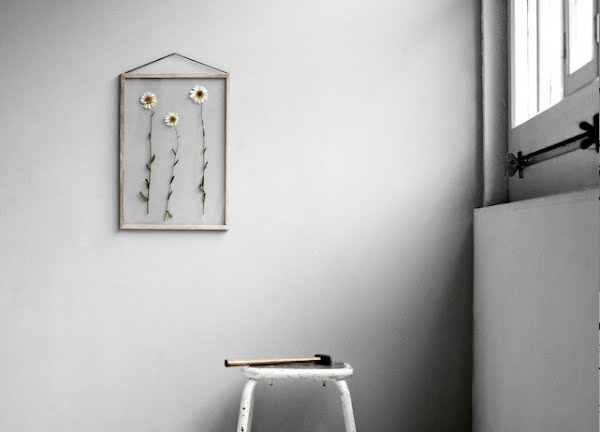
Claire’s tips for achieving flawless pressed florals
1.Choose flowers that flatten easily.
2.Pick flowers after the morning dew has dried.
3.Press decorative foliage as well as flowers.
4.Change the paper every day.
5.Experiment – humble plants such as Plantago lanceolata can come into their own when pressed.
6.Don’t choose bulky flowers like double peonies, at least to begin with.
7.Avoid flowers that are wet with dew or rain.
8.Don’t use kitchen paper, as the embossed pattern can become imprinted on the plants.
9.Be sure to change the paper and be patient – make sure to dry the flowers thoroughly.
Top picks for pressing
– Wildflowers such as primroses (Primula vulgaris) – Wild roses (Rosa canina) – Violets (Viola odorata, V. riviniana) – Birdsfoot trefoil (Lotus corniculatus) – Geranium sanguineum – Ferns and grasses, particularly sweet vernal (Anthoxanthum odoratum) and red fescue (Festuca rubra) – Yellow flowers such as Kerria japonica and buttercups (which hold their colour particularly well) – Spring violet (Gentiana verna), whose wonderful blue can be captured beautifully

?so we thought it might be interesting to try and interpret an old favourite. The idea is that you can pretty much frame what you want, as long as it
is flat or in some way can be flat, as in the example with the flowers. The cool thing is that you can achieve a transparent passe-partout effect if you choose a design that does not fill the entire frame. In this way, the subject almost seems to be floating.? Moebe frames, from ?39.95, Nordic Elements, nordicelements.com.
Now frame your flower art
“The classic clip-on picture frame has not changed much over the last several years,” says Anders Thams of Danish design studio Moebe, “so we thought it might be interesting to try and interpret an old favourite. The idea is that you can pretty much frame what you want, as long as it is flat or in some way can be flat, as in the example with the flowers. The cool thing is that you can achieve a transparent passe-partout effect if you choose a design that does not fill the entire frame. In this way, the subject almost seems to be floating.” Moebe frames, from €39.95, Nordic Elements, nordicelements.com.
Photography Chris Tonnesen Styling Ida Laerke Frames by Moebe
Read more: Dun Laoghaire florist Lulabelle launches its first locally made candle collection
Read more: Petal to the metal: A day in the life with florist Joeanna Caffrey
Read more: Taking up a hobby is actually good for you and this is why





